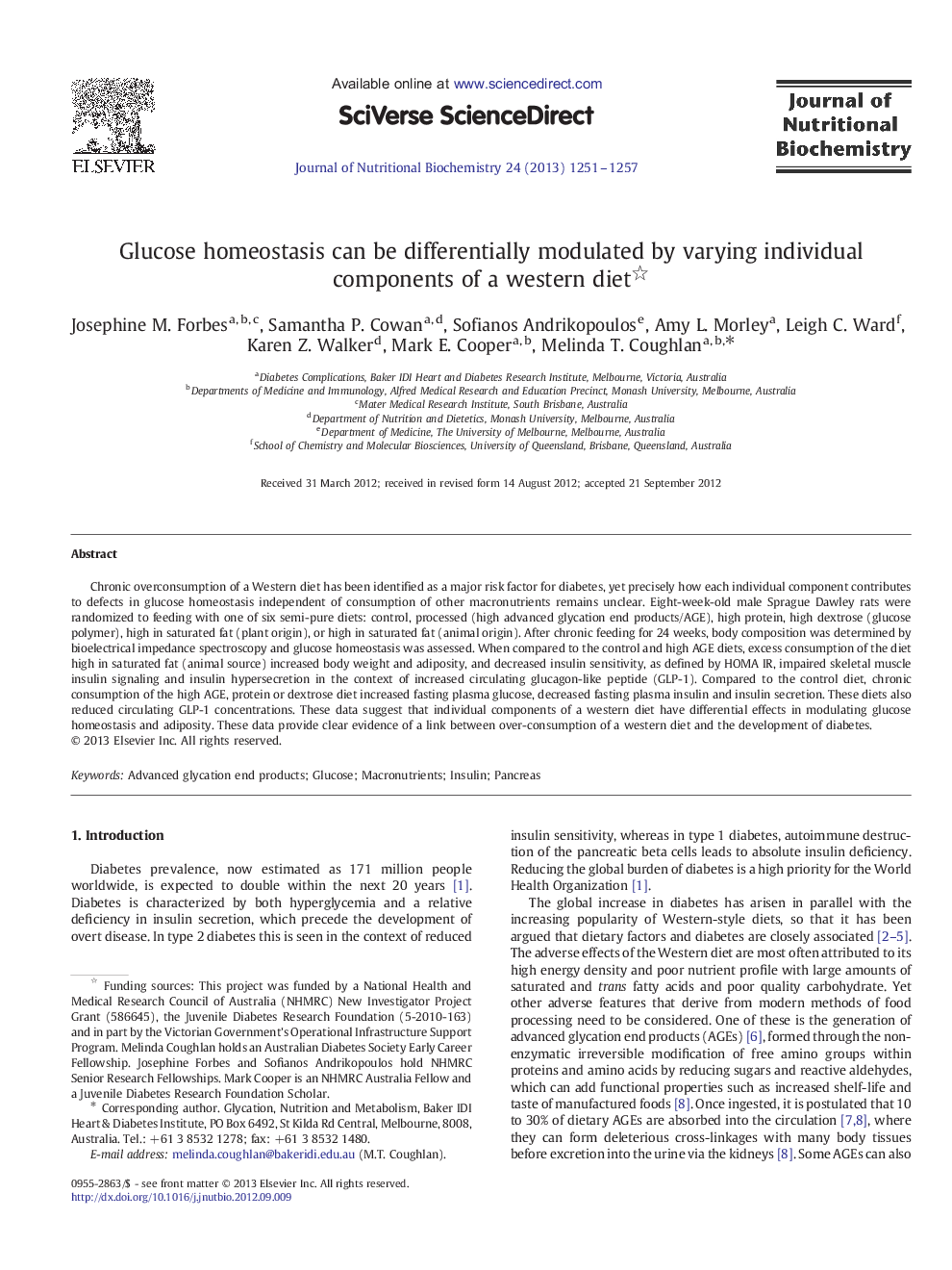| Article ID | Journal | Published Year | Pages | File Type |
|---|---|---|---|---|
| 8337364 | The Journal of Nutritional Biochemistry | 2013 | 7 Pages |
Abstract
Chronic overconsumption of a Western diet has been identified as a major risk factor for diabetes, yet precisely how each individual component contributes to defects in glucose homeostasis independent of consumption of other macronutrients remains unclear. Eight-week-old male Sprague Dawley rats were randomized to feeding with one of six semi-pure diets: control, processed (high advanced glycation end products/AGE), high protein, high dextrose (glucose polymer), high in saturated fat (plant origin), or high in saturated fat (animal origin). After chronic feeding for 24 weeks, body composition was determined by bioelectrical impedance spectroscopy and glucose homeostasis was assessed. When compared to the control and high AGE diets, excess consumption of the diet high in saturated fat (animal source) increased body weight and adiposity, and decreased insulin sensitivity, as defined by HOMA IR, impaired skeletal muscle insulin signaling and insulin hypersecretion in the context of increased circulating glucagon-like peptide (GLP-1). Compared to the control diet, chronic consumption of the high AGE, protein or dextrose diet increased fasting plasma glucose, decreased fasting plasma insulin and insulin secretion. These diets also reduced circulating GLP-1 concentrations. These data suggest that individual components of a western diet have differential effects in modulating glucose homeostasis and adiposity. These data provide clear evidence of a link between over-consumption of a western diet and the development of diabetes.
Related Topics
Life Sciences
Biochemistry, Genetics and Molecular Biology
Biochemistry
Authors
Josephine M. Forbes, Samantha P. Cowan, Sofianos Andrikopoulos, Amy L. Morley, Leigh C. Ward, Karen Z. Walker, Mark E. Cooper, Melinda T. Coughlan,
